Simanaitis Says
On cars, old, new and future; science & technology; vintage airplanes, computer flight simulation of them; Sherlockiana; our English language; travel; and other stuff
JAGUAR R1 FORMULA 1 CAR—VIRTUAL TESTING PART 2
YESTERDAY WE BEGAN ANALYSIS of the Jaguar R1 Formula 1 race car, as described in R&T’s March 2001 telemetry-based virtual track test. Today in Part 2 we continue with bits and bytes shared by Jaguar’s technical wizards, together with Formula 1 contrasts, 2000 versus 2023.
Gearboxes. Then as now, “The shift mechanism is electrohydraulic,” I noted of the Jaguar R1, “initiated by paddles on the steering wheel.”
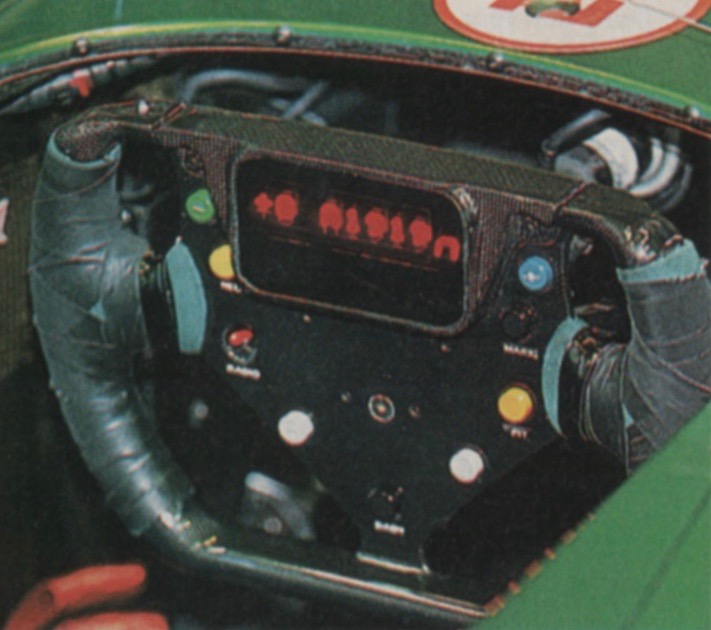
Above, compared with today’s steering wheel, the Jaguar R1’s displays a home-spun simplicity. This and other images from R&T, March 2001. Below, the 2023 Ferrari wheel. Image from planetf1.com
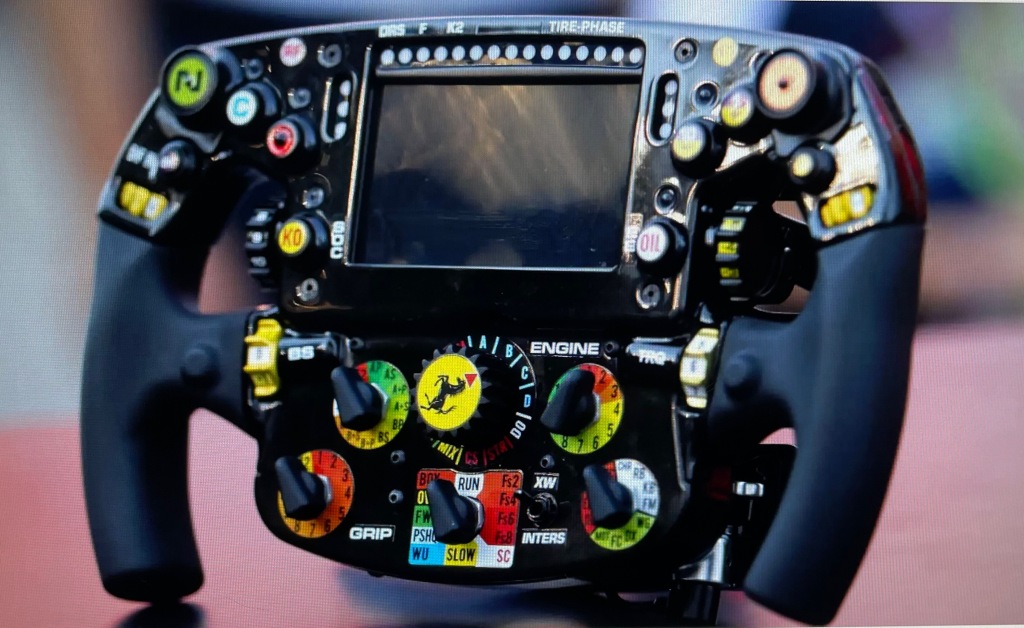
“The R1’s gearbox contains six forward speeds, anything from four through seven allowed,” I wrote. “By regulation, there must be a reverse gear as well, though I’ve never seen one used.”
Come to think of it, I can update this based on recent TV viewing: Occasionally after a spin, drivers have been seen using reverse to point in the right direction. Also, current regulations specify eight forward speeds (and no continuously variable transmissions).
Awesome Acceleration. I recounted, “The R1’s nominal 800 bhp and its all-up, full-tank, driver included weight of around 1560 lb. combine to give awesome acceleration. Zero to 60 mph in 2.7 seconds is amazing enough [gad, road-going BEVs do that now], but even more impressive is how this continues….” Telemetry suggested 9.4 seconds at 181.0 mph for the quarter-mile.

Top Speed. R&T’s “At a Glance” cites the R1’s top speed as 220+ mph, evidently depending on gearing choices as well as aerodynamic settings for particular circuits. Of course, these were days of pre-Drag Reduction Systems.
Based on conversations with Jaguar engineers about aerodynamics, I wrote, “The goal is a balance of downforce and drag, obviously optimized from venue to venue. Of course, Jaguar wasn’t about to share its Indy settings. But Road Test Editor Patrick Hong and I know the Jaguar R1’s top speed there: Just before braking into Turn 1, the car was caught by our Stalker radar at 202 mph. This, by the way, is corroborated by Eddie Irvine’s official 199 mph at the start/finish line and several reports of drivers flat-out through Turn 13—Indy’s traditional Turn 1 taken in the opposite direction—at around 300 km/h (186 mph).”
I noted, “Given that oval racers have been known to lap Indy at 235 mph (admittedly, after a lap’s run-up), it’s evident that the F1 cars were trading top speed for downforce on the infield segment of their Indy laps.”
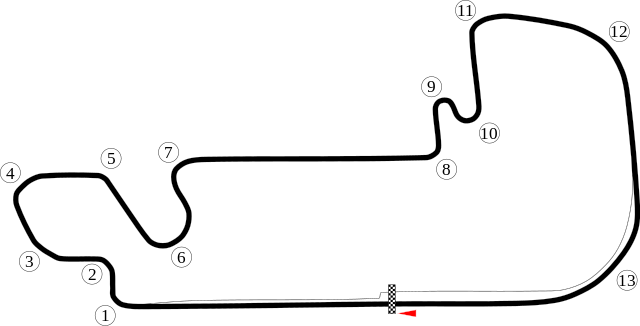
Indianapolis Motor Speedway—Grand Prix Circuit. Image by Will Pittenger from Wikipedia.
Tire Tales. For a while there (1999-2008), FIA tried to reduce handling speeds by prohibiting slicks. Tires required a minimum of four 14-mm (0.55-in.) grooves. What’s more, as I noted in the R1 analysis, “You mustn’t scrub away too much tire either. Each dry-weather tire is molded with four circumferential grooves that are 2.5 mm (0.1 in.) deep, more than traces of which must remain at the checkered flag.”
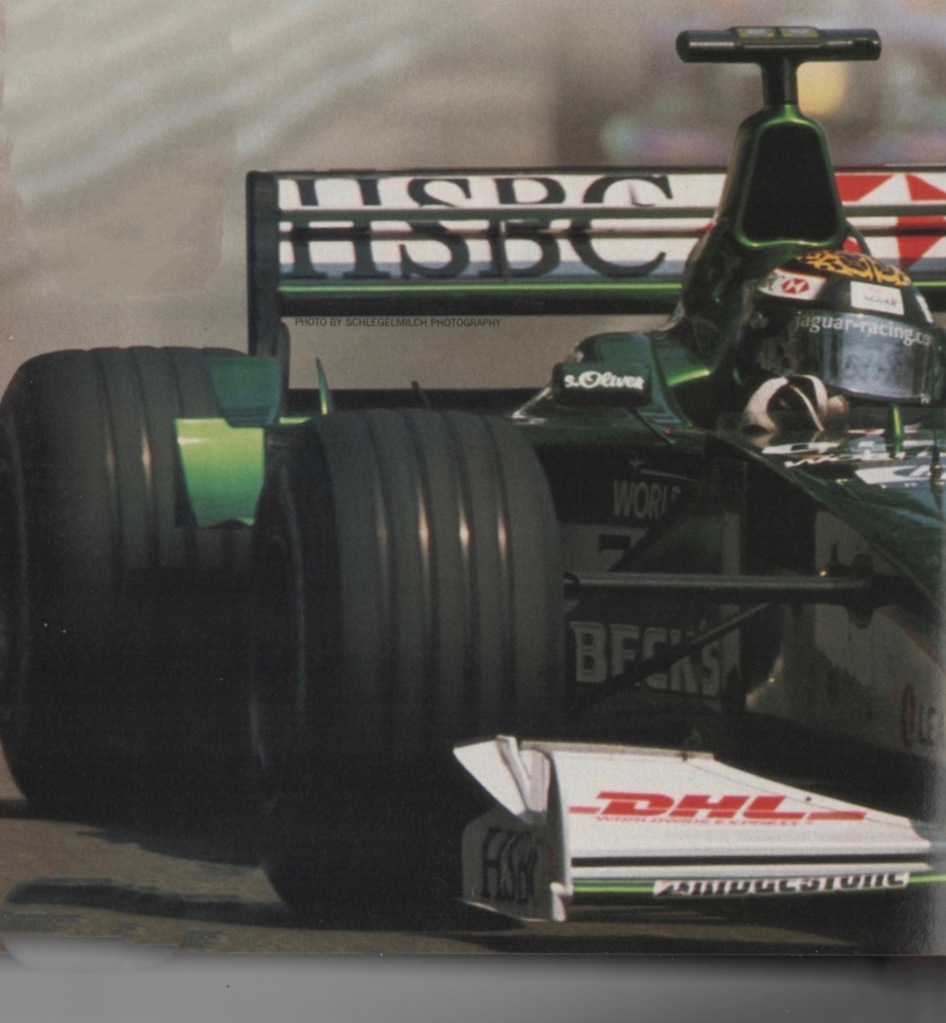
Slicks were reintroduced in 2009, the idea being that enhanced mechanical (as opposed to aero) grip would encourage overtaking. Similar logic prevailed in 2011 with introduction of Drag Reduction System rear wings. Generally, both have been successful in this.
Handling. I continued with the R1 performance, “We were able to analyze this further with the help of Indy’s Turn 13 thought of as one quadrant of a circular skidpad with a 1.0-mile circumference and modest banking of 9 degrees 12 minutes. When Eddie Irvine goes through it at 186 mph, he’s averaging 2.80g of lateral acceleration.”
“Patrick’s radar,” I recounted, “also recorded the Jaguar working through Turns 1 and 3; this first one apexed at around 65 mph; the latter, at nearly 130. From these we estimate low- and mid-range lateral acceleration values of 2.3g and 2.7g, respectively.”
Red-hot Carbon Braking. “Our vantage point,” I said, “also offered a view of the incredible braking of an F1 car. Within a few hundred feet, its carbon discs glowing red hot, the Jaguar R1 hauled down from more than 200 mph to that 65-mph apex at Turn 1. Patrick’s readings extrapolated into an equivalent braking distance of 129 ft. from 80 mph and a 60-0 value of 71 ft.”
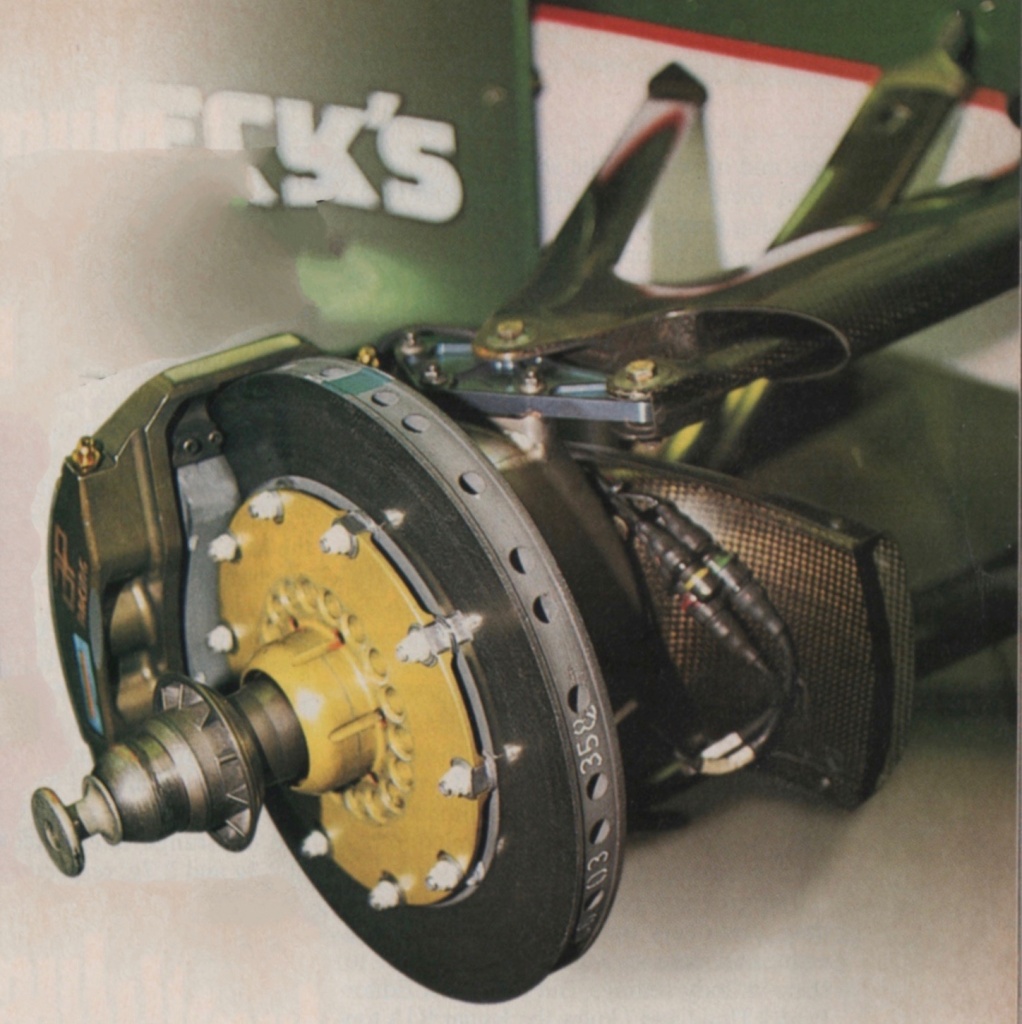
“Curiously,” I noted, “the initial distances offered by Jaguar were a bit longer. It turned out these were based on pit-in telemetry data—where a driver’s obvious goal of preserving the ‘lollipop’ pit sign [not to say its holder!] no doubt warranted a bit of conservatism.”
The team’s simulation program also confirmed Patrick’s radar gun analysis: The program’s 60-0 distance was 72 ft., its 80-0, 118 ft. “… and in the spirit of our Jaguar R1’s virtual nature,” I wrote, “these are the ones reported in the Data Panel.”
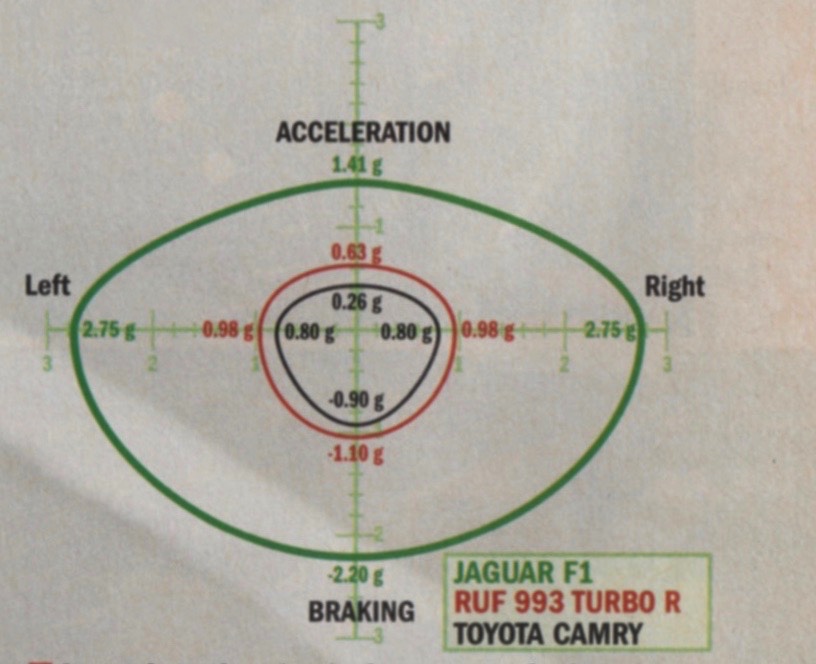
Friction Circle Analyses. “Nearby,” I concluded, “is an indication of the R1’s friction circle summarizing our virtual Jaguar R1’s acceleration, braking, and lateral performance. As Contributing Editor Peter Wright notes in Bill and Doug Milliken’s wonderful book Race Car Vehicle Dynamics, ‘Driving a car as fast as possible in a race is all about maintaining the highest possible acceleration level in the appropriate direction.’ Graphically, this translates into the Jaguar R1’s riding the edge of its friction circle—and what a ride this is!” ds
© Dennis Simanaitis, SimanaitisSays.com, 2024
